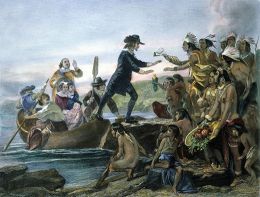
Initially the establishment of Tryon's Line was beneficial, but as the white population grew the purpose and authority of the line were ignored. Before the beginning of the American Revolution, North Carolina's frontier families and Indians had reverted to their former conflicts.